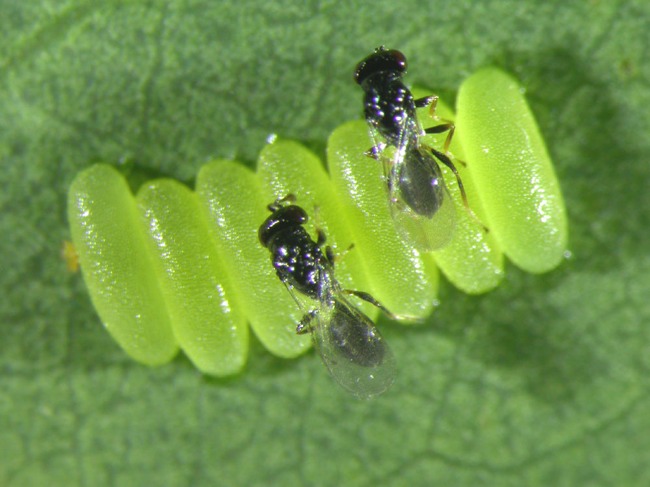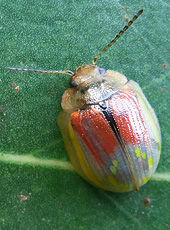PESTS AND DISEASES OF FORESTRY IN NEW ZEALAND
Paropsis biological control agents has a white christmas in Dublin
Scion is the leading provider of forest-related knowledge in New Zealand
Formerly known as the Forest Research Institute, Scion has been a leader in research relating to forest health for over 50 years. The Rotorua-based Crown Research Institute continues to provide science that will protect all forests from damage caused by insect pests, pathogens and weeds. The information presented below arises from these research activities.
From Forest Health News 212, January 2011.
The week before Christmas, Scion entomologist Toni Withers supplied about one thousand parasitic wasps of Enoggera nassaui (Hymenoptera: Pteromalidae) within eggs of their host, the eucalyptus tortoise beetle Paropsis charybdis, to Dublin.

As Ireland had been experiencing record snow falls in the days leading up to their arrival, they had snowy views from their secure room in the quarantine insectary of the University of Dublin.
Scion supplied the parasitoids to entomologist Jan-Robert Baars to see if they might be a suitable biological Control agent for Paropsisterna gloriosa (Coleoptera: Chrysomelidae). This beetle is a close relative to the eucalyptus tortoise beetle. Both are native to Australia and defoliate a range of eucalypts.
Paropsisterna gloriosa is threatening the small eucalyptus forest industry in southern Ireland, which grows a variety of eucalypts, some for pulp, firewood and many for as decorative foliage for the floral industry. Paropsisterna gloriosa was first found in Ireland in 2007.

Scion has a long history associated with research on this beneficial egg parasitoid E. nassaui. Nod Kay and John Bain were responsible for its introduction from Perth in 1988; Brendan Murphy completed his MSc and PhD studying it; and Tara Murray her PhD, which she received last year.
We were hopeful the beetle in Ireland would be acceptable to E. nassaui as they oviposit happily within eggs of many paropsine beetles including the genera Paropsisterna (=Chrysophtharta), Paropsis, Trachymela and Dicranosterna. Brendan never collected the eggs of this rare Paropsisterna gloriosa during his research in Tasmania during his PhD studies.
Dr Baas has since reported that Enoggera nassaui was more than happy to accept the Paropsisterna gloriosa eggs for oviposition, and adults were reared.
Unfortunately being a much smaller beetle than Paropsis charybdis, the E. nassaui are emerging from the small eggs at least half the size that we see them in New Zealand. Theory would suggest they will be less able to thrive when being forced to use such a small host, but time will tell.
Toni Withers
This information is intended for general interest only. It is not intended to be a substitute for specific specialist advice on any matter and should not be relied on for that purpose. Scion will not be liable for any direct, indirect, incidental, special, consequential or exemplary damages, loss of profits, or any other intangible losses that result from using the information provided on this site.
(Scion is the trading name of the New Zealand Forest Research Institute Limited.)



